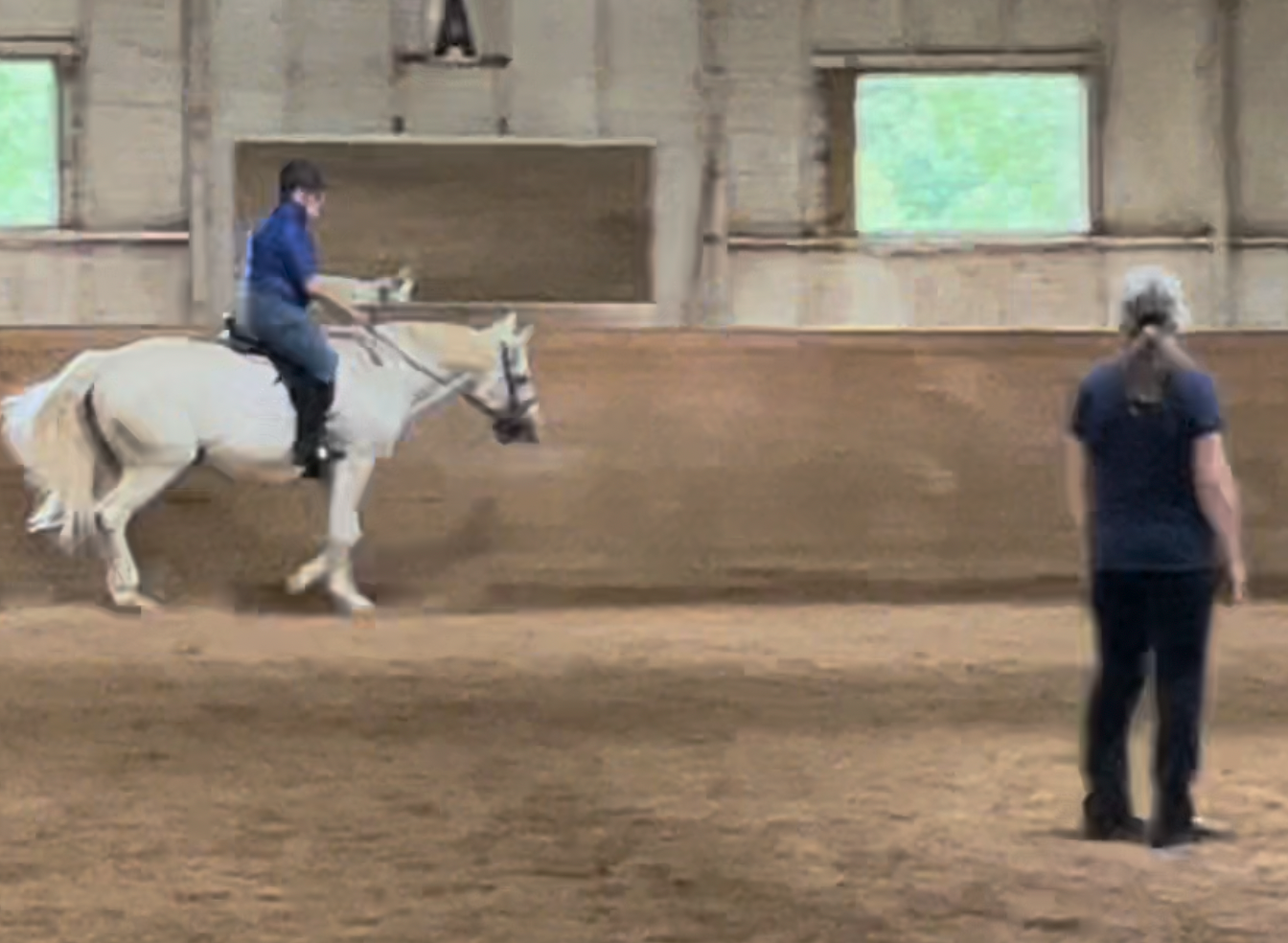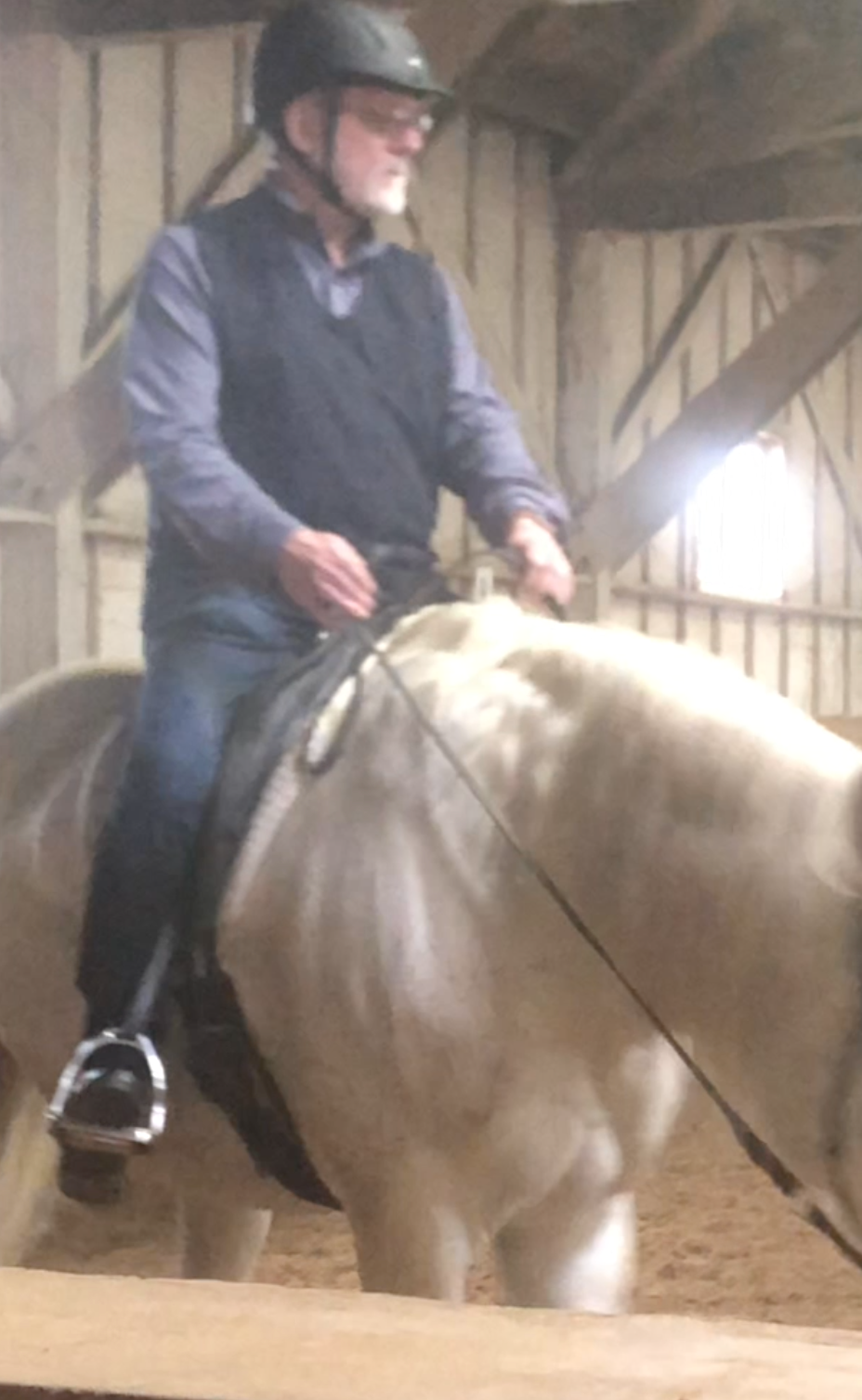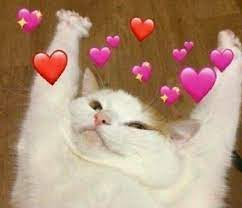Guess what I did today...my horsey adventures
-
So, dressage…
“Dressage,” pronounced “Dress-AAJH,” means “training,” or “horsemanship.” The idea was to develop the best-trained, most responsive horse/rider combination, in the tradition of the Spanish vaquero. Having originated in the use of the horse as a tool of warfare. One needed a horse that responded to the most subtle cues, responding to what the rider thinks so that he can concentrate on the task at hand - killing someone.
That school of riding evolved to a competition in which long-strided, large horses are trained to go through a series of maneuvers in an enclosed 20 by 60 meter arena. The goal in the competition was to be “one” with the horse, with the horse responding to the most subtle of cues.
A dressage saddle looks a bit like a close-contact jumping saddle, but there are notable differences. First of all the flaps, or fenders, are much longer. This allows the rider to ride with a longer stirrup than in a jumping position, which, for the sake of balance, requires a short stirrup. Think of how a jockey rides. Stirrups are ridiculously short, and the jockey spends more time standing in the stirrups than sitting on the saddle.
The other major difference is the higher cantle, or back part of the saddle. This allows the rider to have a deeper “seat.”

Yeah, saddles are expensive.
Along with the longer-legged style of riding, his legs are in contact with the horse almost constantly. It’s almost like they’re wrapped around the horse. Because of this, the horse is trained to respond to leg signals as well as rein signals. This style has been quite the transition for me, and using my legs to cue the horse has been a challenge, not only because of the difference in style, but also because of the inherent weakness of muscle groups that I’ve never used.
If you watch any dressage competitions, you’ll see how the rider communicates with the horse via the most subtle of cues. It’s almost as though when you think it, the horse does it.
This is a pretty good example. Note how at about 1:30, the horse, at a trot, begins to extend his stride, not increasing the speed of steps, but greatly increasing his stride.
Link to videoNote how the rider looks like she’s glued to the saddle.
Then, at about 4:30, at the canter, the same thing happens. She asks the horse to extend his stride…and off they go.
At 5:00 - the horse does “flying lead changes.” Imagine you’re skipping, and you lead with your right foot. That’s what a canter is. The horse CHANGES the foot with which he’s leading the “skip” with every other stride. Remarkable.
But, at my level, with Opal, I’m just trying to get her to trot around the arena without breaking down to a walk, LOL.

-
A bad day today.
It seems that poor Opal had a major disagreement with another horse while she was turned out.
Opal got kicked - hard - in her right rear hindquarter. The vet came out, and she was given some butazoladin (a major anti-inflammatory) and antibiotics because there was swelling in her right "thigh".
I couldn't get her to do anything today. She'd start to trot, and after about 40-50 feet, she'd give up - "This hurts too much." There was a lot of tail-swishing and head-tossing whenever I asked her to do anything more than walk.
I felt bad for the poor girl, and at the start of my lesson today, I didn't know that there was an issue.
After I found out, I was totally happy with just walking around, asking her for non-stressful things.
Not as good as last week, at all. Hopefully, she'll be more herself in seven days. I was looking forward to building on last week's progress, but I feel like a took a huge step backward today.
It's so different when it's not your own horse.
And...30 minutes is not enough.
-
A bad day today.
It seems that poor Opal had a major disagreement with another horse while she was turned out.
Opal got kicked - hard - in her right rear hindquarter. The vet came out, and she was given some butazoladin (a major anti-inflammatory) and antibiotics because there was swelling in her right "thigh".
I couldn't get her to do anything today. She'd start to trot, and after about 40-50 feet, she'd give up - "This hurts too much." There was a lot of tail-swishing and head-tossing whenever I asked her to do anything more than walk.
I felt bad for the poor girl, and at the start of my lesson today, I didn't know that there was an issue.
After I found out, I was totally happy with just walking around, asking her for non-stressful things.
Not as good as last week, at all. Hopefully, she'll be more herself in seven days. I was looking forward to building on last week's progress, but I feel like a took a huge step backward today.
It's so different when it's not your own horse.
And...30 minutes is not enough.
-
Opal was better today. Much better. She got ridden 3 times last week, and the combination of mild exercise and some butazoladin seems to have worked out the kinks.
Today, when I asked her to trot, there was no objection at all. She did get a little distracted as we went past the open door, but I caught it early, and I was able to encourage her to continue moving. Her trot is really slow, like a Western jog, so it's easy to stay seated in the saddle. When she goes faster, you have to "post" - rise out of the saddle with every other stride so that you're not bouncing around.
Link to videoNow, compare that with me on Simon, back in the day. You can see in the beginning of the clip (and Mrs. George is a TERRIBLE videographer) how his trot is so vigorous that it's impossible to stay in the saddle without posting. About halfway down the rail, he picks up a very nice canter, and we just go around, having a great time.
I would take him off the property and ride him, just like that, wherever we wanted - along a highway, through a subdivision, in the woods.
Link to videoI really miss that horse.
Edit to add: That clip of me and Simon - I'm using Mrs. George's tiny little close-contact English saddle. You don't sit in that saddle as much as ON it.
-
Nothing to really add, other than it was a good day today. It took about 10 minutes for Opal to understand that it wasn't going to be just another "walk around in circles" type of day.
I kept messing with her head, asking her to do things that she wasn't expecting, like walking down the center of the arena rather than going in a circle, asking her to stop, back up and then go into a trot from a halt, making some small circles (which can be difficult at the trot if you're feeling lazy), passing to the side (crossing your hind legs), and turning 90 degrees while standing.
I'm nowhere near the level of someone like @jodi is, of course. Still, it's fun. I have no doubt it would be better if I did this 3-4 days a week, for an hour, rather than only for 30 minutes on a Sunday.
Link to videoI should add...
I had a good day last week as well. It seems like, after all this time, Opal and I are beginning to "click," where she's understanding what I'm asking of her. This is the kind of relationship with a horse that should take a couple of weeks, if you own your own. Here, it's taken months.
With Simon, I could just "think" something - turn, trot, canter, halt - and it would happen. With Opal, everything is not a thought, but a request.
You'll notice that I give her a couple of kicks now and then to encourage her to move out. I NEVER had to do that with Simon.
-
Nothing to really add, other than it was a good day today. It took about 10 minutes for Opal to understand that it wasn't going to be just another "walk around in circles" type of day.
I kept messing with her head, asking her to do things that she wasn't expecting, like walking down the center of the arena rather than going in a circle, asking her to stop, back up and then go into a trot from a halt, making some small circles (which can be difficult at the trot if you're feeling lazy), passing to the side (crossing your hind legs), and turning 90 degrees while standing.
I'm nowhere near the level of someone like @jodi is, of course. Still, it's fun. I have no doubt it would be better if I did this 3-4 days a week, for an hour, rather than only for 30 minutes on a Sunday.
Link to videoI should add...
I had a good day last week as well. It seems like, after all this time, Opal and I are beginning to "click," where she's understanding what I'm asking of her. This is the kind of relationship with a horse that should take a couple of weeks, if you own your own. Here, it's taken months.
With Simon, I could just "think" something - turn, trot, canter, halt - and it would happen. With Opal, everything is not a thought, but a request.
You'll notice that I give her a couple of kicks now and then to encourage her to move out. I NEVER had to do that with Simon.
@George-K Very cool video. You look good - like you know what you are doing!

-
Nothing to really add, other than it was a good day today. It took about 10 minutes for Opal to understand that it wasn't going to be just another "walk around in circles" type of day.
I kept messing with her head, asking her to do things that she wasn't expecting, like walking down the center of the arena rather than going in a circle, asking her to stop, back up and then go into a trot from a halt, making some small circles (which can be difficult at the trot if you're feeling lazy), passing to the side (crossing your hind legs), and turning 90 degrees while standing.
I'm nowhere near the level of someone like @jodi is, of course. Still, it's fun. I have no doubt it would be better if I did this 3-4 days a week, for an hour, rather than only for 30 minutes on a Sunday.
Link to videoI should add...
I had a good day last week as well. It seems like, after all this time, Opal and I are beginning to "click," where she's understanding what I'm asking of her. This is the kind of relationship with a horse that should take a couple of weeks, if you own your own. Here, it's taken months.
With Simon, I could just "think" something - turn, trot, canter, halt - and it would happen. With Opal, everything is not a thought, but a request.
You'll notice that I give her a couple of kicks now and then to encourage her to move out. I NEVER had to do that with Simon.
-
Nice video George. I can see that you are light with your hands. That shows in Opal’s quiet demeanour. It also shows that you are a true equestrian.
@Renauda said in Guess what I did today...:
I can see that you are light with your hands.
Thanks. I've been working on that. My instructor stresses the point that with lesson horses, a pull on the reins usually indicates "stop" or "slow down." It should be a signal, with the lightest possible touch, indicating, "I need you to turn your head this way," with most of the real direction coming from your legs and seat.
As I've
complainedsaid, a lesson horse is much more demanding, and you have to pay MUCH more attention to what the horse is doing. WIth Opal, if we're at a good trot, and I lose concentration, like saying something to my instructor, she takes my lack of attention as a signal that she no longer needs to keep moving, and she'll break to a walk.Carrying a crop seems to raise her awareness level, however. Just holding the magic wand in your hand changes her demeanor, and she's much, much more attentive. I'm at the point where I can start to feel her getting a bit sluggish, and a squeeze of my leg, or the most gentle tap on her shoulder with the crop lets her know that slowing down is not in her immediate future, LOL.
Nevertheless, fun.
-
@Renauda said in Guess what I did today...:
I can see that you are light with your hands.
Thanks. I've been working on that. My instructor stresses the point that with lesson horses, a pull on the reins usually indicates "stop" or "slow down." It should be a signal, with the lightest possible touch, indicating, "I need you to turn your head this way," with most of the real direction coming from your legs and seat.
As I've
complainedsaid, a lesson horse is much more demanding, and you have to pay MUCH more attention to what the horse is doing. WIth Opal, if we're at a good trot, and I lose concentration, like saying something to my instructor, she takes my lack of attention as a signal that she no longer needs to keep moving, and she'll break to a walk.Carrying a crop seems to raise her awareness level, however. Just holding the magic wand in your hand changes her demeanor, and she's much, much more attentive. I'm at the point where I can start to feel her getting a bit sluggish, and a squeeze of my leg, or the most gentle tap on her shoulder with the crop lets her know that slowing down is not in her immediate future, LOL.
Nevertheless, fun.
I know what you mean about lesson horses. But I note Opal does not need a martingale. That tells me that previous students have not been too heavy handed on the bit. All the lesson horses I ever had to ride needed a martingale. Didn’t look out of place with an English saddle and snaffle but looked ridiculous with a Western saddle and snaffle.


